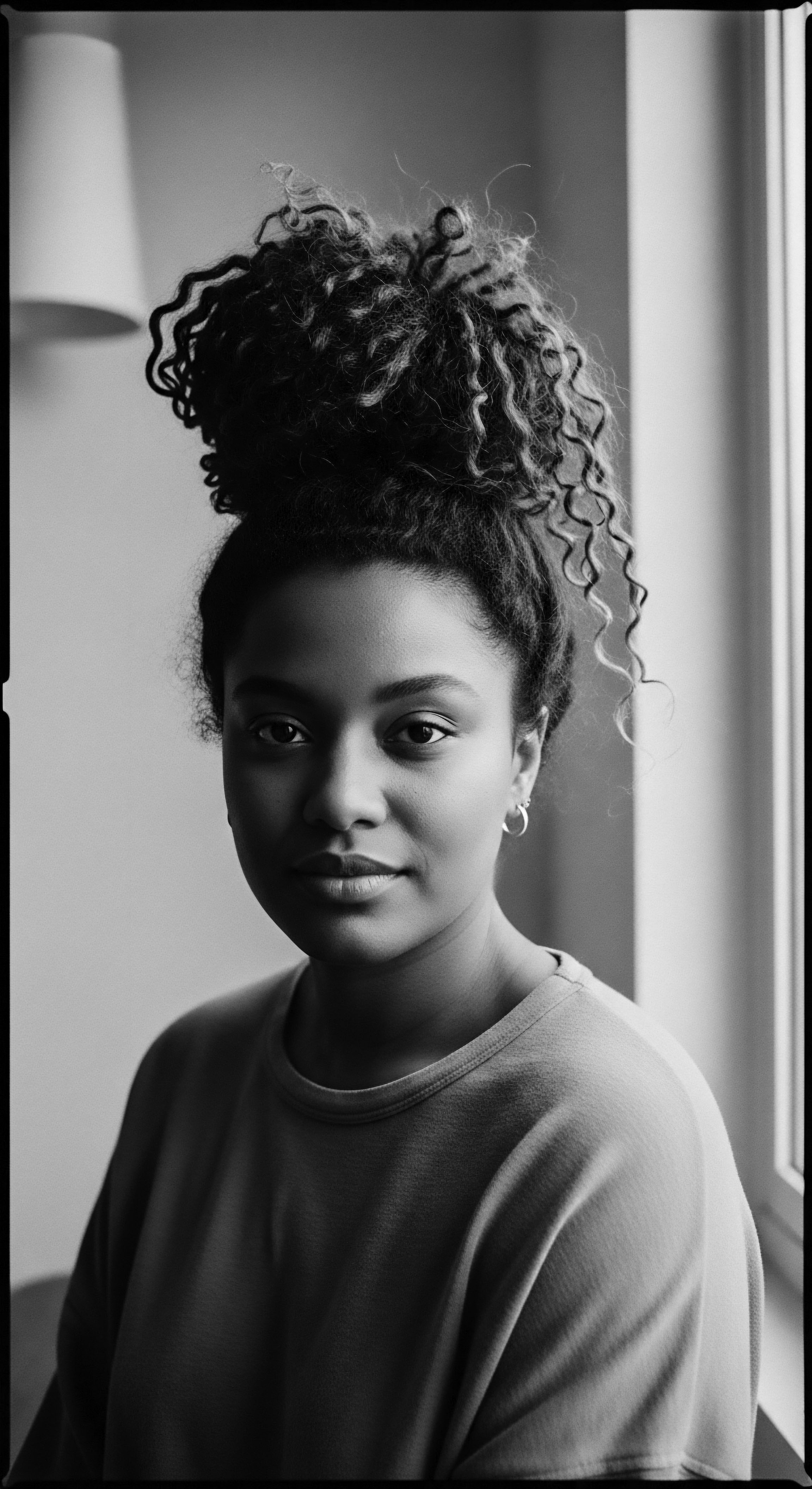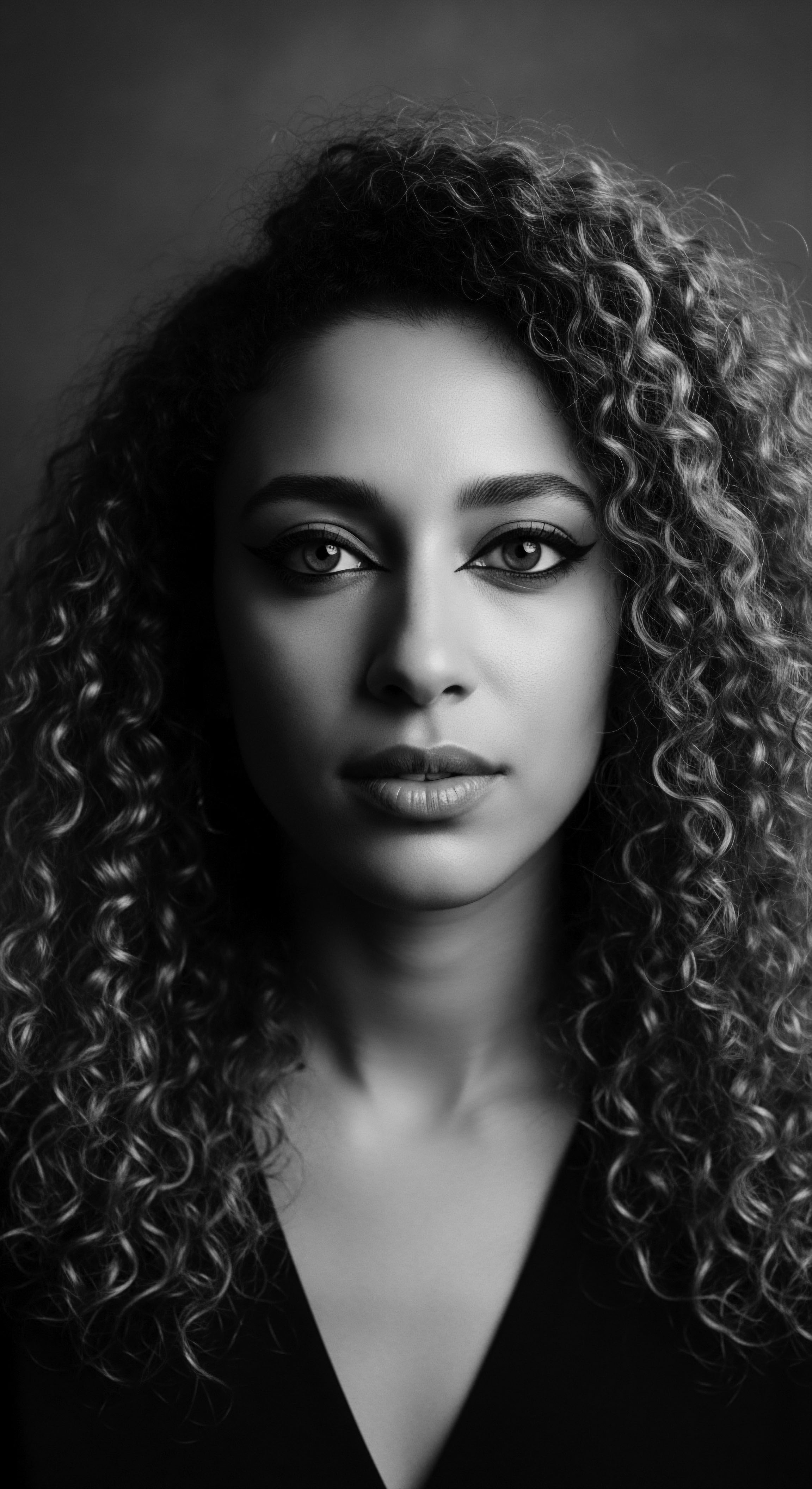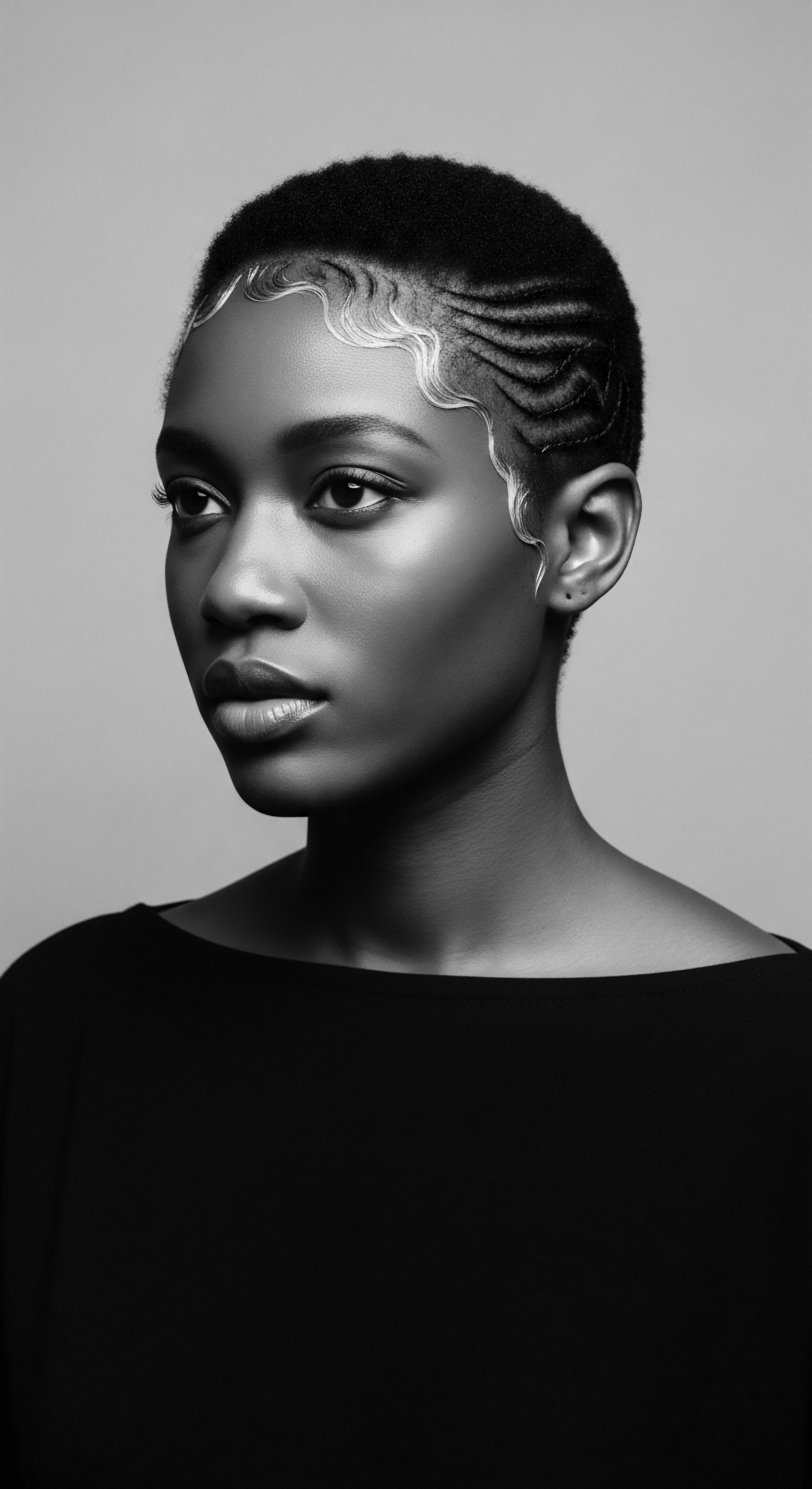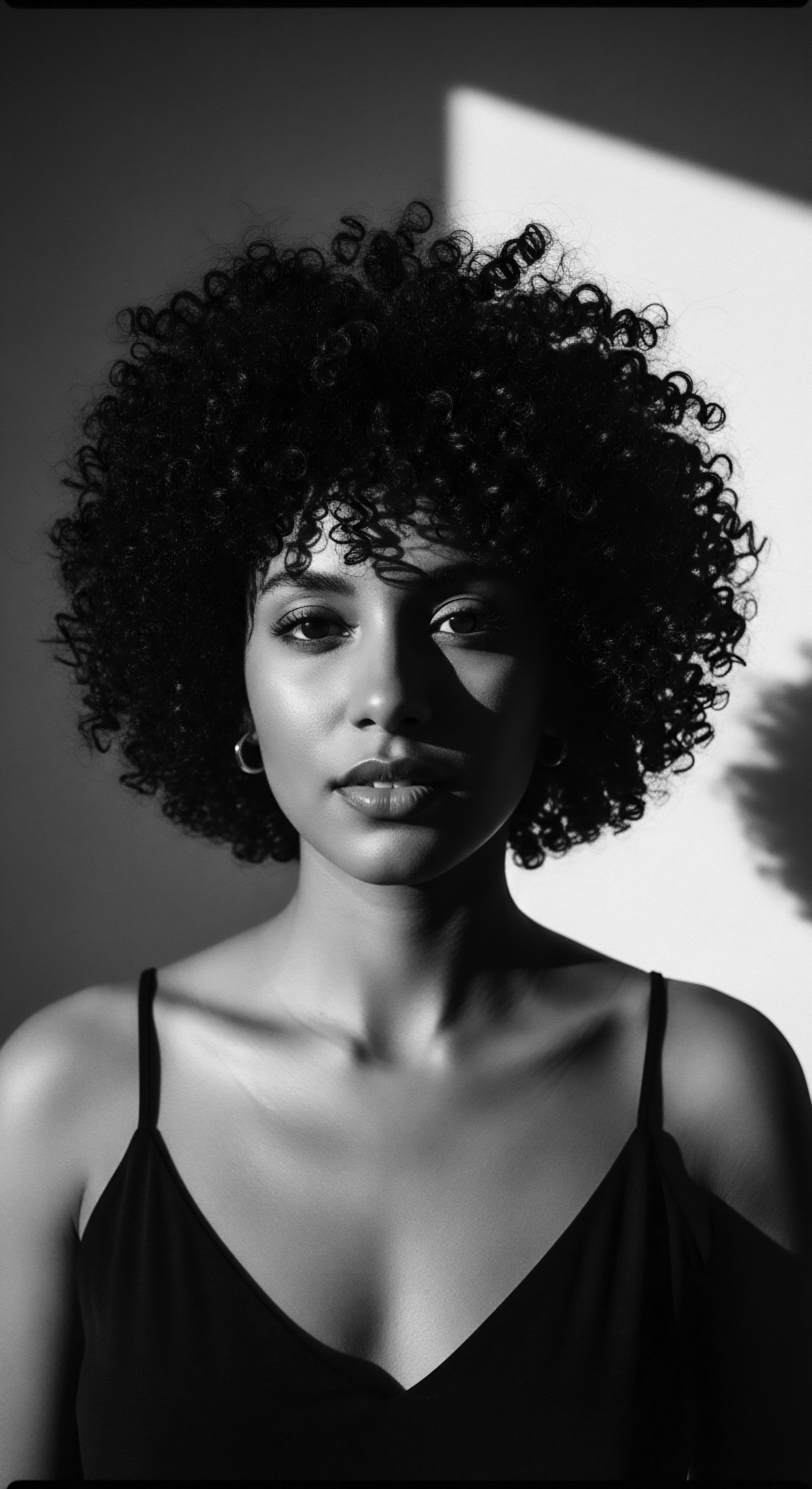
Roots
To hold a single strand of textured hair is to touch a living lineage, a vibrant helix spun from the very breath of time, a connection back to the ancestral lands where the sun-drenched earth yielded secrets of sustenance and strength. For those of us who carry this crown, whether visibly or in the deeper currents of our spirit, understanding its heritage is an act of reclamation, a tender, knowing embrace. When we ask about the traditional oils that fortified African textured hair, we are not simply seeking a list of ingredients.
We seek the whispers of grandmothers, the touch of hands that understood the hair’s coiled magic long before science offered its pronouncements. We seek the wisdom embedded in millennia of living, breathing care.
The very structure of textured hair, with its unique bends and coils, presented its own set of blessings and challenges. Unlike straighter hair types, the path a coiled strand takes from follicle to tip is not a direct one. Each turn and twist creates points of vulnerability where the cuticle, the hair’s outermost protective layer, can lift. This intricate architecture, while beautiful in its boundless variety, means natural oils produced by the scalp can struggle to travel down the entire length of the strand, leaving the ends particularly susceptible to dryness and fracture.
Our ancestors, acutely attuned to the rhythms of nature and the needs of their bodies, observed this. Their solutions were not born of laboratory experiments but of deep, intuitive knowledge passed through generations, a practical ethnobotany that saw the land as a boundless pharmacy.

Anatomy From an Ancestral Gaze
Consider the hair strand not as a static filament but as a miniature river, constantly flowing with energy and life. The Follicle, nestled beneath the skin, is the spring from which this river emerges. Ancestral practices instinctively understood the health of the scalp as paramount, recognizing it as the foundation for vibrant growth. Oiling the scalp, then, was not just about conditioning; it was an act of seeding, of nourishing the very root.
The hair shaft itself, composed primarily of a protein called Keratin, held secrets our forebears learned to coax out. They knew the difference between hair that felt brittle and hair that possessed a pliant strength, and they sought out the natural emollients that could impart this resilience.
The rich diversity of African textured hair—from tightly coiled z-patterns to looser waves—was met with an equally diverse array of care. Communities developed practices specific to their local flora and climate. A dry, arid environment might prompt the heavy application of rich butters, while a humid, tropical setting might call for lighter, more breathable oils. This adaptability, this profound responsiveness to environment, forms a vital part of our hair heritage.

Ancient Lexicons of Luster
The language of textured hair care, long before modern categorization systems, was spoken through the hands, through the communal rituals of styling and tending. There wasn’t a universal classification chart; there was experiential knowledge. The oils chosen were known by their immediate effects ❉ how they softened, how they shone, how they protected the hair from the elements, whether sun or dust. These were the fundamental attributes, understood and communicated without scientific jargon.
Our ancestors recognized the growth cycles of hair not through microscopic analysis but through the visible evidence of new sprouts and shedding. They knew that hair could thin, could break, could flourish. Their care practices, including oiling, were designed to support continuous growth and minimize loss, promoting a full and healthy appearance that often carried social or spiritual weight. The traditional oils served as vital agents in this perpetual cycle of hair life, helping to maintain scalp health, prevent breakage, and seal in moisture.
Traditional oils were chosen for textured hair based on intuitive knowledge of their ability to provide softness, shine, and environmental protection.
Some of the foundational fortifiers, integral to the very fabric of African hair care, include:
- Shea Butter ❉ A rich, creamy solid, meticulously extracted from the nuts of the shea tree, often used to seal moisture, soothe scalps, and provide a protective barrier.
- Castor Oil ❉ A viscous oil from the castor bean, widely valued for its ability to support scalp vitality and historically believed to promote hair thickness and strength.
- Palm Oil ❉ Derived from the fruit of the oil palm, known in its various forms for its deep conditioning properties and significant presence in diverse culinary and cosmetic traditions across Africa.
- Baobab Oil ❉ Extracted from the seeds of the majestic baobab tree, recognized for its nourishing fatty acids and its role in improving hair elasticity and softness.
- Moringa Oil ❉ A lighter oil from the moringa tree seeds, prized for its antioxidant content and its ability to condition and protect the hair strand.

Ritual
The act of applying traditional oils to African textured hair was far more than a cosmetic routine; it was a sacred ritual, a tender thread connecting individuals to their lineage, their community, and the very spirit of the land. These practices, honed over centuries, embodied a profound understanding of holistic wellbeing, where the care of the body was inextricably linked to the health of the spirit and the continuity of ancestral wisdom. The diligent preparation and application of these fortifying oils became a cornerstone of beauty, hygiene, and cultural identity.

Ancestral Alchemy ❉ Preparing the Oils
Before modern machinery, the creation of these precious oils was often a laborious, communal endeavor, particularly for the more solid butters. Consider the process of making Shea Butter, a substance so intertwined with the lives of West African women that it is sometimes called ‘women’s gold’. The arduous journey from shea fruit to creamy butter involves a series of steps ❉ collecting fallen fruits, separating the nuts, boiling, sun-drying, cracking the shells, crushing the kernels, roasting, grinding into a paste, and then the critical kneading phase, where water is gradually added to separate the butter.
This multi-day process, often undertaken by generations of women together, infused the butter not only with its intrinsic properties but also with the communal energy of shared labor and inherited knowledge. The butter, then, carried the warmth of many hands and the songs of its making.
Other oils, like Castor Oil, were prepared through their own specific methods. In many traditions, castor beans were dried, roasted, and then pounded to release the oil, sometimes followed by boiling the mash to separate the oil from the water. This dedication to process speaks to the value placed on these natural fortifiers. The effectiveness of these oils, understood empirically through countless applications, was rooted in their molecular structure and nutrient density.
For instance, shea butter, rich in Oleic Acid and Stearic Acid, offered deeply conditioning qualities, while its unsaponifiable compounds provided protection and healing. Castor oil, unique for its high concentration of Ricinoleic Acid, provided anti-inflammatory benefits to the scalp, promoting a healthy environment for hair growth.

The Communal Touch
Hair care was rarely a solitary act in traditional African societies. It was a space for intergenerational connection, storytelling, and the transmission of cultural values. Grandmothers, mothers, and aunties would gather, styling young girls’ hair, braiding intricate patterns, and, crucially, oiling the scalp and strands. This hands-on teaching was the primary mode of instruction.
It was during these moments that the practical application of oils – how much to use, how to massage it into the scalp, when to reapply – was learned alongside tales of lineage, community lore, and life lessons. This communal aspect imbued the oils with a significance that transcended their biochemical benefits; they became symbols of care, legacy, and collective identity.
The preparation and application of traditional oils represented a deep, communal understanding of care, passed down through generations.
A powerful historical illustration of this intergenerational transmission and economic significance can be found in the enduring practices surrounding Shea Butter Production and use in West Africa. Lovett (2011) describes how women’s cooperatives in countries like Burkina Faso have maintained traditional methods of processing shea nuts for centuries, creating a product that not only sustains their families economically but also forms a central component of traditional beauty and wellness rituals, particularly for hair. The knowledge of identifying the best nuts, the precise fermentation times, and the rhythmic kneading to separate the butter is a living archive of heritage, where each step contributes to a substance revered for its profound fortifying effects on coiled hair. This tradition stands as a testament to indigenous ecological knowledge and the enduring legacy of women’s roles in cultural preservation.

Oils and Their Traditional Roles
Each oil held a particular place in the traditional hair care repertoire, often chosen for specific properties observed over time.
- Shea Butter ❉ Widely used across West Africa, shea butter acted as a superior sealant, locking in moisture and protecting hair from environmental stressors like the sun and dry winds. It was also applied to the scalp to soothe irritation and relieve dryness, providing a rich, emollient layer.
- Castor Oil ❉ Known in various parts of Africa and the diaspora, especially in Jamaica (often as Jamaican Black Castor Oil due to its specific processing with ash), castor oil was traditionally applied to the scalp to promote hair growth and strengthen strands, believed to reduce breakage and increase apparent density.
- Palm Oil ❉ A staple in many parts of Central and West Africa, palm oil (in its unrefined, red form) was used as a deep conditioner and detangler. Its carotenoids and vitamin E provided protective qualities, and its rich texture helped soften and add a sheen to hair.
- Baobab Oil ❉ Utilized in regions where the baobab tree thrives, this lighter yet nutrient-dense oil was used for its ability to improve hair elasticity and manageability, helping to prevent breakage in intricate hairstyles.
- Moringa Oil ❉ Less ubiquitous but valued in certain areas for its light texture and beneficial compounds, moringa oil was used for scalp health and to impart a gentle conditioning, leaving hair feeling soft without heaviness.
The application methods were as considered as the oils themselves. Hair was often sectioned, allowing for targeted application to the scalp and along the length of each braid or twist. Massaging the oils into the scalp was a common practice, stimulating circulation and ensuring penetration. These were not quick, superficial applications; they were deliberate, mindful acts of care that celebrated the hair’s coiled nature and its inherent resilience.
| Traditional Oil Shea Butter |
| Primary Fortifying Attribute (Ancestral Understanding) Deep moisture sealant, protective barrier against elements. |
| Corresponding Modern Scientific Explanation High concentrations of oleic and stearic acids create an occlusive layer; unsaponifiables provide anti-inflammatory and antioxidant benefits. |
| Traditional Oil Castor Oil |
| Primary Fortifying Attribute (Ancestral Understanding) Scalp vitality, promotion of hair thickness and strength. |
| Corresponding Modern Scientific Explanation Ricinoleic acid possesses anti-inflammatory properties, supporting a healthy scalp microbiome and circulation for follicle health. |
| Traditional Oil Palm Oil (Red) |
| Primary Fortifying Attribute (Ancestral Understanding) Intense conditioning, detangling, and sheen. |
| Corresponding Modern Scientific Explanation Rich in Vitamin E (tocotrienols) and carotenoids (provitamin A), offering antioxidant protection and emollient properties. |
| Traditional Oil Baobab Oil |
| Primary Fortifying Attribute (Ancestral Understanding) Improved hair elasticity and softness. |
| Corresponding Modern Scientific Explanation Contains a balanced profile of omega-3, -6, and -9 fatty acids, which contribute to hair pliancy and reduce brittleness. |
| Traditional Oil Moringa Oil |
| Primary Fortifying Attribute (Ancestral Understanding) Light conditioning, scalp nourishment. |
| Corresponding Modern Scientific Explanation Abundant in antioxidants like zeatin and various vitamins, supporting scalp health and providing mild emollience without weighing hair down. |
| Traditional Oil These oils represent a profound ancestral knowledge of botanical properties, now increasingly validated by contemporary scientific inquiry. |

Relay
The journey of traditional African oils, from ancestral ritual to contemporary reverence, marks a powerful relay of knowledge across time and geography. It is a testament to the resilience of memory, carried within the very structure of our hair and the stories whispered from one generation to the next. The challenges faced by textured hair did not diminish with the passage of eras; instead, the deep wisdom of these oils became even more critical in confronting new societal pressures and evolving contexts. The principles of protection, nourishment, and honor, first applied in ancient villages, traveled the tides of history, landing on new shores and adapting, yet never losing their original, fortifying spirit.

Echoes of Resilience in Diaspora
The transatlantic slave trade, a cataclysm that sought to strip enslaved Africans of their identity, could not erase the memory of hair care. In the harrowing conditions of forced labor and displacement, the knowledge of using available natural resources, sometimes adapting to new plants and oils found in the Americas, became a quiet act of defiance and cultural continuity. While access to traditional African oils might have been scarce, the principle of using natural emollients to tend to and protect hair endured. This resilience speaks volumes about the intrinsic value these practices held.
The desire to maintain one’s hair, even in chains, was an assertion of self, a clinging to a part of their identity that could not be taken away. This continuation of care, adapting where necessary, is a profound aspect of our shared textured hair heritage.

How Do These Oils Work Their Magic?
Modern science, with its analytical gaze, has begun to unravel the mysteries long understood by ancestral hands. The fortifying power of these traditional oils for textured hair lies in their unique biochemical compositions. Textured hair, with its inherent coil and tendency for dryness, greatly benefits from ingredients that can both moisturize and seal.
For instance, the high fatty acid content of oils like Shea Butter and Palm Oil is critical. These lipids, including Oleic Acid, Stearic Acid, and Palmitic Acid, are similar to the natural lipids found in human hair and skin. When applied, they form a protective, occlusive layer on the hair shaft, reducing water loss through evaporation.
This helps to maintain the hair’s natural moisture balance, which is particularly important for hair prone to dryness due to its structural characteristics. Moreover, the presence of these fatty acids helps to smooth down the cuticle, minimizing friction and making the hair less prone to snagging and fracture.
Many traditional oils are also rich in Vitamins and Antioxidants. Red palm oil, for example, is a powerhouse of Vitamin E (especially tocotrienols) and Carotenoids (precursors to Vitamin A). These compounds are potent scavengers of free radicals, which can cause oxidative damage to hair proteins and lipids, leading to weakness and dullness.
By neutralizing these damaging agents, these oils help preserve the integrity of the hair strand, contributing to its overall strength and vitality. Moringa oil, though lighter, also possesses a significant antioxidant profile, including Zeatin, which supports cellular health.
The fortifying power of traditional oils for textured hair stems from their rich fatty acid profiles, vitamins, and antioxidants, which moisturize, protect, and enhance structural integrity.
The viscosity of oils like Castor Oil plays a distinct role. Its thick consistency allows it to coat the hair shaft effectively, providing a substantive barrier against mechanical damage. The unique Ricinoleic Acid in castor oil offers anti-inflammatory benefits to the scalp, creating a healthier microenvironment for the hair follicle. A healthy scalp, free from irritation and inflammation, is fundamental to robust hair growth, a fact intuitively understood by generations who used castor oil for density and strength.

Validating Ancestral Wisdom
Contemporary dermatological and cosmetic science is increasingly recognizing and validating the efficacy of these time-honored ingredients. Research studies, examining the molecular mechanisms, confirm what has been known experientially for centuries. This scientific validation helps bridge the gap between traditional wisdom and modern understanding, allowing for a deeper appreciation of the ingenuity embedded in ancestral practices.
The effectiveness of traditional oiling practices is not merely anecdotal; it is increasingly supported by biochemical data. This convergence of ancient knowledge and modern inquiry strengthens the argument for centering these traditional oils in textured hair care.
Consider the impact of these oils on reducing hair breakage, a common concern for textured hair. When hair is adequately moisturized and its cuticles are smoothed, the likelihood of inter-strand friction and external damage decreases significantly. Traditional oils, with their humectant and emollient properties, contribute directly to this protective effect. They serve as a natural armor, allowing textured hair to retain its length and flourish.

Cultural Constancy Through Changing Tides
The continued prominence of these traditional oils in Black and mixed-race communities globally is a powerful testament to their cultural significance. They are more than just hair products; they are carriers of history, identity, and communal memory. From the shea butter sold in bustling West African markets to the small bottles of Jamaican black castor oil found in diaspora homes, these oils represent a continuous thread of heritage.
They remind us that true beauty care is rooted in self-knowledge, ancestral practices, and the profound wisdom of the earth. The relay of this knowledge ensures that the soul of a strand, fortified by ancient oils, continues its journey, vibrant and unyielding.

Reflection
To consider the traditional oils that fortified African textured hair is to undertake a profound meditation on heritage itself. It reminds us that our hair is a living archive, a repository of stories, resilience, and wisdom passed down through sun-drenched generations. The journey of these oils – from the painstaking harvest of nuts and seeds, through communal processing, to their tender application – speaks volumes about a holistic understanding of beauty and well-being, deeply woven into the very fabric of ancestral life. These are not merely emollients; they are distillations of care, acts of defiance against erasure, and affirmations of identity.
The enduring significance of shea, castor, palm, baobab, and moringa oils, alongside countless others, transcends their biochemical properties. They represent an unbroken chain of knowledge, a dialogue between the earth and its people, a testament to the ingenuity and resourcefulness of those who understood the unique needs of coiled and kinked strands long before modern chemistry emerged. Each application of these oils today, whether in a bustling city salon or a quiet home, is an echo from the past, a continuation of a sacred tradition. It’s an act of honoring the hands that first worked these elements, the minds that first intuited their power.
This exploration of traditional oils reminds us that the “Soul of a Strand” is indeed a profound truth. Each coil, each curve, holds the legacy of adaptation, perseverance, and inherent splendor. By understanding the historical and scientific grounding of these fortifying oils, we gain not just knowledge of hair care, but a deeper connection to ourselves, to our ancestors, and to the vibrant, living library of textured hair heritage that continues to flourish. The oils are not just for our hair; they are for our spirit, binding us to a rich and unfolding narrative.

References
- Lovett, J. (2011). Shea Butter ❉ The Natural Moisturizer from the African Tree of Life. Inner Traditions.
- Gbedema, S. Y. Tettey, C. O. & Akwetey, A. D. (2012). Ethnobotanical Survey of Medicinal Plants Used in Traditional Hair Care in Ghana. Journal of Medical and Allied Sciences.
- Oyelere, V. (2018). The Science of Black Hair ❉ A Comprehensive Guide to Textured Hair Care. Independently published.
- Dweck, A. C. (2009). Handbook of Cosmetic Science and Technology. Elsevier.
- Robins, A. G. & Van Wyk, B. E. (2005). The World of Traditional African Hairdressing. Kew Publishing.
- Vermaak, I. et al. (2011). African Plant Oils ❉ A Review of Their Composition and Potential Applications. Journal of the American Oil Chemists’ Society.
- Watson, M. (2019). Braiding Sweetgrass ❉ Indigenous Wisdom, Scientific Knowledge and the Teachings of Plants. Milkweed Editions.
